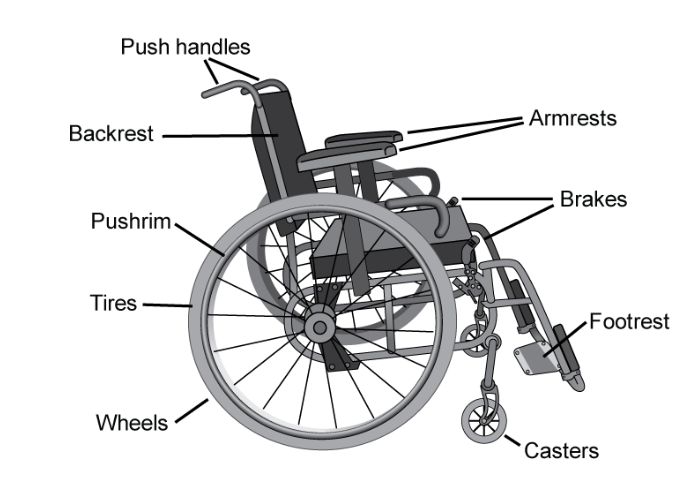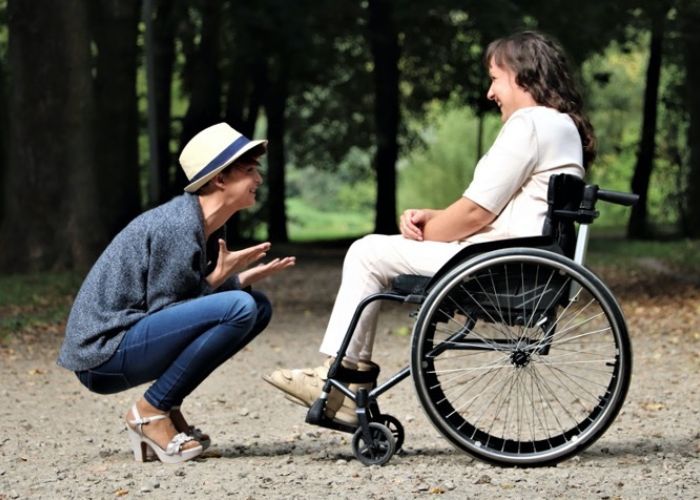What Are the Key Features to Look for in a Wheelchair for Patient Mobility? As a physiotherapist with over 7 years of experience assisting patients with limited mobility, I have gained significant insight into wheelchair selection. Choosing the right wheelchair is crucial for optimizing patient comfort, safety, and independence.
Table of Contents
What Are the Key Features to Look for in a Wheelchair for Patient Mobility?
In this blog post, I will share my expertise on the most important features to evaluate when selecting a wheelchair for patient mobility.
Armrests
Adjustable armrests that can swing back allow for easier transfers in and out of the wheelchair. Armrests should have removable pads for pressure relief and adjustable height to provide proper arm support. For active users, full-length armrests with contoured grips provide stability for functional mobility.
Seat Height
The ideal seat height allows the user’s feet to rest firmly on the floor or footrests with the knees bent at a 90-degree angle. A seat height of 17-19 inches works well for most adults. Going lower increases the risk of pressure injuries. Being too high hampers mobility.
Seat Depth and Width
For optimal comfort and support, there should be 1-2 inches of clearance between the back of the knee and the seat edge. Seat width depends on body size – narrower for children, wider for larger adults. A contoured seat helps stabilize posture.

Backrest
According to healthyjeenasikho, A height-adjustable, angled backrest with lumbar support fosters proper upright posture and upper body alignment. This helps avoid hunching forward which strains the back. The backrest should extend at least 4 inches higher than the shoulders.
Weight Capacity
Double-check that the wheelchair weight capacity meets the needs of the intended user. Standard wheelchairs support 250-300 lbs whereas bariatric models accommodate up to 700 lbs. Exceeding the weight capacity strains wheelchair components and compromises safety.
Wheel Size
Larger rear wheels (22-26 inches) roll more smoothly over uneven outdoor terrain and thick carpets but require more effort to propel. Smaller wheels (16-20 inches) are ideal for tight indoor spaces with smooth flooring. The front casters should be at least 5 inches for stability.
Brakes
User-activated wheel locks allow caregivers to securely park the wheelchair. For enhanced safety, some models have automatic brakes that engage when the wheelchair is stationary. Hand brakes provide stopping power for users who propel themselves.
Footrests
Swing-away, height-adjustable footrests should be used to correctly position the feet and lower legs. This prevents painful inflammation behind the knees. Removable footrests make transfers simpler.
Frame and Upholstery
A rigid, steel or aluminum frame reinforced at stress points provides durability. The wheelchair should have a corrosion-resistant finish. Breathable, cushioned upholstery aids pressure relief. Easily cleanable materials facilitate infection control.
Maneuverability
The wheelchair should be easy to steer and turn in tight spaces. Spoked mag wheels, precision bearings, and a stable wheelbase optimize maneuverability. Caregivers need compact folding models for storage and transport in vehicles.
Specialty Features
Customized options include recline, tilt-in-space, elevating leg rests, and shock-absorbing casters for those vulnerable to pressure injuries. Electronic controls are available for power mobility. Postural belts, straps, and supports assist users who have difficulty maintaining optimal positioning.
Read More:- What Are the Differences Between Manual and Digital Blood Pressure Monitors
As an experienced physiotherapist assisting patients from pediatrics to geriatrics, I have guided numerous individuals and families through the wheelchair selection process. There is no universal perfect wheelchair. Needs and preferences are highly personal depending on factors like age, size, strength, coordination, cognition, environment, and caregiver resources.
My goal is to collaborate closely with patients, doctors, and therapists to identify individual requirements. Once armed with a detailed understanding of lifestyle and functional abilities, I can recommend appropriate wheelchair models and features to try. Test drives enable patients to experience how different chairs feel and handle. Fine-tuning and finalizing the best match is a team effort.
For complex cases, I coordinate with specialized seating and mobility clinics. Therapists here utilize high-tech tools to precisely measure patients and customize cutting-edge wheelchair systems. Electronic controls, standing functions, and alternative drive mechanisms greatly expand options for maximizing independence. Still, fundamental features like adjustable armrests and backrests should not be overlooked.
As an authoritative voice in this field, I aim to guide readers and patients toward wise wheelchair selections for optimizing comfort, health, and participation. My extensive hands-on experience has taught me how seemingly small details like arm pad width and wheel size can have an enormous impact on quality of life.
Read More:- How Do Adjustable Patient Beds Enhance Comfort and Care?
It is incredibly fulfilling to empower individuals to reach their mobility goals and reclaim active lifestyles. I hope you like reading “What Are the Key Features to Look for in a Wheelchair for Patient Mobility?”
I welcome your questions in the comments section below! Please share what wheelchair features have worked well in your experience.

Dinesh Singh Negi is a seasoned expert in the healthcare procurement industry with over 15 years of experience in supply chain management and hospital procurement strategies. Holding a Master of Business Administration (MBA) in Operations Management and Supervision, Dinesh has successfully optimized procurement processes for numerous healthcare facilities, ensuring cost-effective and quality supply solutions. As the lead author on hospibuy.com, Dinesh shares his deep knowledge and insights on hospital procurement trends, product evaluations, and industry best practices. Connect with Dinesh on LinkedIn for more professional insights.










